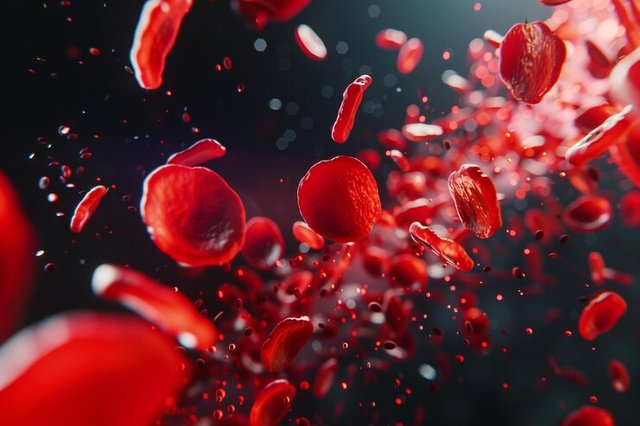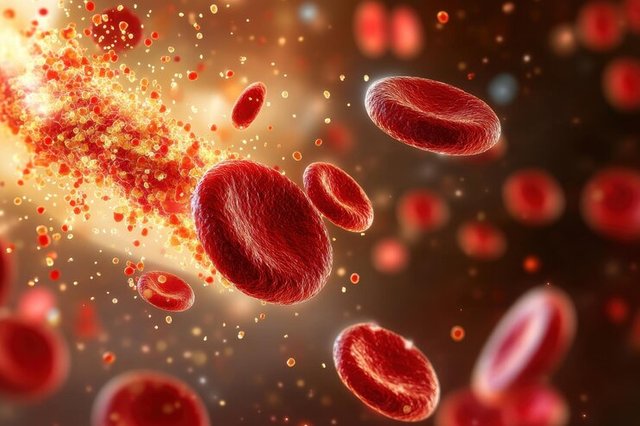SEC S20W5 || Hemolytic Anemias - Module 5
Define Hemolytic Anemias (2.5 points)
 |
|---|
Hemolytic Anemia is known as a group of disorders human body in which red blood cells are destroyed (hemolyzee) faster than they can be produced by the bone marrow. Simply put it is a blood disorder that makes my red blood cells break down or die faster than my body can replace them with new blood cells.
Types
I know of two types of hemolytic Anemia which are: Intrinsic (Inherited) Homolytic Anemia and Extrinsic (Acquired) Hemolytic Anemia.
Intrinsic (Inherited) Homolytic Anemia is the type that is caused by defects within our red blood cells which is often due to genetic mutations. Sickle cell anemia, hereditary spherocytosis and thalassemia are good examples of Intrinsic (Inherited) Homolytic Anemia.
Extrinsic (Acquired) Hemolytic Anemia is the type that is caused by external factors that destroy red blood cells (RBCs), such as autoimmune diseases, infection, physical damage, or certain meditation.
Define Sickle Cell Anemia (2.5 points)
 |
|---|
Sickle cell anemia is known as a genetic blood disorder that is characterized by the production of abnormal hemoglobin, called hemoglobin S (HbS). It is the abnormal hemoglobin that causes red blood cells to take on a rigid, crescent shape most especially when there are low oxygen levels. To this, sickle-shaped cells can clump together, which can lead to blockages in blood vessels, reduce the delivery of tissues, and oxygen, and cause damage to the organs.
Chronic anemia, pain crises, organ damage, and infection are the key features of sickle cell anemia that those who are affected usually experience. What I know about sickle cell anemia is that it is inherited in an autosomal recessive manner, which means a person must inherit two copies of the sickle cell gene from a parent. Sickle cell trait is when one has one sickle cell gene and one normal gene.
As earlier said those with sickle cell usually manage pain, go to the hospital, take drugs and often fall sick.
Intravascular hemolysis vs extravascular hemolysis (2.5 points)
Both Intravascular hemolysis and extravascular hemolysis are two different mechanisms by which red blood cells are destroyed in hemolytic. Below are what differentiates the both of them.
Intravascular hemolysis
Location: Red Blood cell (RBC) destruction happens inside the blood vessels.
Causes: It is caused by mechanical trauma, for example, immune reactions, toxins, infection, and so on.
Mechanism: Red Blood cells (RBC) break apart directly within the circulation, releasing hemoglobin into the bloodstream.
Based on Clinical Features:
Hemoglobinemia: Free hemoglobin is released into the plasmas.
Hemoglobinuria: Excess hemoglobin spills into the urine, thereby causing dark or red-colored urine.
Extravascular hemolysis
Location: Red blood cell (RBC) destruction happens outside the blood vessels which is primarily in the liver and spleen within macrophages of the reticuloendothelial system.
Causes: It is caused by conditions that make red blood cells more fragile, like hereditary spherocytosis, sickle cell diseases, or autoimmune hemolytic Anemia.
Mechanism: Red blood cells are abnormal or damaged and engulfed by macrophages in the spleen or liver, where they are broken down.
Based on clinical features:
Splenomegaly: Enlargement of the spleen due to the increased workload of destroying RBCs or filtering.
Jaundice: It is elevated bilirubin levels from RBC breakdown leading to yellowing of the eyes and skin.
Explain a case of Hemolytic Anemia (2.5 points)
 |
|---|
A case of hemolytic Anemia can arise from so many cases, such as autoimmune disorders, inherited conditions, or external factors like medications or infections. Below is an example of a case involving Hemolytic Anemia (AIHA).
Overview of the case
There was a 45-year-old woman who was taken to the emergency department with complaints of jaundice, fatigue dark-colored urine, and jaundice for the past week. The woman also reports that she was feeling short of breath after minimal activity and had mild abdominal discomfort.
The patient's medical history shows mild asthma but no other significant illnesses were detected. According to the doctor, the patient appears pale, suggesting anemia.
I am inviting: @kuoba01, @simonnwigwe, and @ruthjoe
Cc:-
@dexsyluz
Hi! Sickle cell anemia is quite interesting! Since I heard about it for the first time I have felt a lot of desire to learn more, the information you give about this type of anemia is very good, I have heard that in Africa it is quite common for people to be diagnosed with this type of anemia.
Have a nice day!
Thank you for your support.
Upvoted. Thank You for sending some of your rewards to @null. It will make Steem stronger.
Your post is very informative. It was really necessary to know the symptoms, causes and prevention of hemolytic anemias. Thanks for discussing such an important topic. Good luck for the contest.
Thank you for your support.